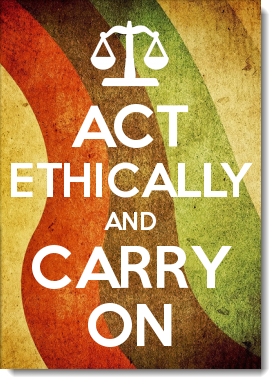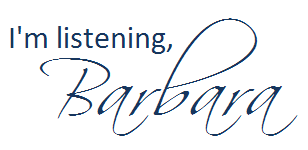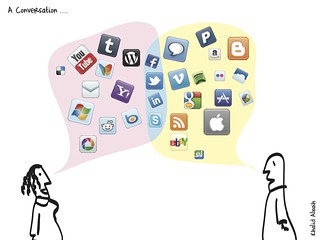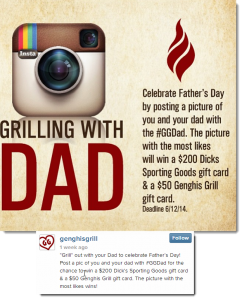How to Get Your Blog Post Shared 1000 Times — by RazorSocial
The fine folks from RazorSocial have published an article with nifty infographic (below) with some excellent tips for creating shareable content. The article is definitely worth a read.
Windows 10 & Cisco VPN Client Don’t Play Nicely Together . . . Yet
My #Windows10 upgrade didn’t go as planned, and within 30 minutes, I was able to learn what the problem was and roll back to Windows 8.1.
Thank goodness for old friends and Facebook.

Here’s what happened.
The download and installation appeared to go smoothly, but after booting up with Windows 10, my computer no longer recognized my networking hardware (Problem #1). And when I clicked on the link for the Settings window, the window would appear briefly on my screen, then vanish (Problem #2).
My friend Chuck Hutchings (who I have known since my days at Auburn a “few” years ago) saw my post asked if I had Cisco VPN Client installed, which I do. He let me know that the Cisco VPN Client was the culprit — because he had the same issue. His recommendation? Roll back to Windows 8.1.
That would have been easy to do, except I had Problem #2 also. A quick Google search using my Galaxy Note 4? led me to the Microsoft Community, where another person had the vanishing Setting window, too. I downloaded the recommended troubleshooter to my phone, attached my phone to my computer, then ran the troubleshooter. The troubleshooter fixed the vanishing Settings window, so I was able to the steps Chuck found to go back to Windows 8.1.
Rolling back took fewer than 10 minutes, and everything is now working just like it was before the upgrade debacle.
Now . . . wondering how long until Windows 10 and Cisco VPN Client work together? (I have to use that specific VPN for work, so using another VPN isn’t an option.)
Genghis Grill: There You Go Again
Using the words of The Gipper, I say to Genghis Grill, “There you go again.”

I wish I was surprised that the company still holding improper contests. But after my experiences in its “Health” Kwest, I am not surprised at all.
Here’s the latest, a photo contest on Instagram using the hashtag #GGDad. Seems innocuous enough, right?
So what’s wrong with this “most likes on this photo” contest? Let’s start with where the contest violates Instagram’s own Promotion Guidelines.
- The official rules are nowhere to be found on Instagram (via a link) or on the Genghis Grill website.
- The offer terms and eligibility are nowhere to be found on Instagram (via a link) or on the Genghis Grill website.
- The promotion does not include a “complete release of Instagram by each entrant or participant.”
- Nor does the promotion include an “acknowledgement that the promotion is in no way sponsored, endorsed or administered by, or associated with, Instagram.”
In addition, Genghis Grill (again) does not include guidelines for how contestants should disclose that their photos are hashtagged for a contest. When Cole Haan did something similar in March 2014, the FTC issued a closing letter (a type of warning) to the company.
Sigh.
So what am I doing, other than sharing the information via this blog post? I’ve reported the company’s contest to Instagram and to the FTC. I would have also contacted the company directly, but the last two times I did, it apparently didn’t matter.
It really isn’t that difficult for a social media manager to learn the guidelines for contests, is it?
Please, if you are holding a contest using social media, take the time to learn how to do it ethically.

(NOTE to PR Professors: Feel free to use this Instagram contest as an example in your classes.)
How to Rock Your Internship in 10 Easy Steps

Summer is near, and so is the season of internships. This post is primarily for my student readers. (I’ll have another post next week for those who are supervising or working with interns.) Here are 10 easy steps for rocking your internship.
- Learn names. I know the first few days are overwhelming with all the people you will likely meet. Ask if there’s an org chart with photos (some companies have them — they’re a great help). Write down names as soon as you can, along with something about what the person does and how you may be working with him or her. Greet people by name the next time you see them. And if you forget a name, just ask the person for a reminder — the sooner the better.
- Be on time. Always. And find out what “on time” means at your new organization. For some, a 10:00 meeting means that people should walk in the door at 10:00. For others, it means arrive before then, and be ready to jump into the first agenda item at 10:00.
- Dress the part. For the first week or so, take note of how others dress in your office, and dress similarly if possible. Ask your supervisor about attire, when in doubt. And it never hurts to dress a little more professionally than the norm, especially if your role is client-facing.
- Ask questions. You aren’t expected to know how to do everything on Day One.
- Recap every meeting. Takes notes and be sure you know what action items from the meeting have been assigned to you.
- Avoid personal use of social media on the job. Focus your time and efforts on your employer, and save personal use of social media for breaks and lunchtime. And if your internship requires you to interact in social media, be sure to post from the correct account. (There are numerous examples of people accidentally tweeting, etc., from their own accounts. Trust me.)
- Don’t complain, especially publicly. Internships (and jobs) are not all sunshine, roses and unicorns. Do what you’re asked (within reason) with a smile on your face and a positive attitude. If things aren’t going well, discuss it with your supervisor. Don’t take it to social media, even with vague complaints; it may come back to haunt you.
- Save copies of your work. Unless your employer specifically prohibits it, save as much as you can of the content you produce. You may need to share copies to earn credit for your internship.
- Keep in touch with faculty. Even if it’s not required, send periodic updates of your internship with relevant faculty members at your university. They really want you to succeed, and most are willing to offer help or advice when you need it.
- Leave an impression. Recap the body of your work and share it with your supervisor and any co-workers who might benefit from it. Let them know how to reach you once the internship is over. Connect with them on LinkedIn. (You are on LinkedIn, right? And your profile is updated, including the internship, right?) Keep those bridges clean, clear and unburned.
What other tips would you offer?

Six Guidelines for Running an Ethical Contest in Social Media
 As many of my readers may recall, I was a participant in a social media contest earlier this year that went horribly wrong, in oh-so-many ways. In fact, it went so poorly that the company didn’t even publicize the results of the contest in its own social media channels (though it did issue a standard news release). I found myself frustrated when my repeated attempts to provide helpful advice to the contest sponsor were dismissed. And I learned a LOT from this experience that may help your organization should you desire to plan a contest in social media.
As many of my readers may recall, I was a participant in a social media contest earlier this year that went horribly wrong, in oh-so-many ways. In fact, it went so poorly that the company didn’t even publicize the results of the contest in its own social media channels (though it did issue a standard news release). I found myself frustrated when my repeated attempts to provide helpful advice to the contest sponsor were dismissed. And I learned a LOT from this experience that may help your organization should you desire to plan a contest in social media.
So what I have for you here are six things I learned during that catastrophe about running an ethical contest in social media. Following these guidelines may help turning your brand ambassadors into your “assadors,” as one of my Facebook friends called them.
NOTE: I am not a lawyer, nor am I giving legal advice. I am just sharing my understanding of the guidelines.
One
Learn, understand and apply the disclosure guidelines that the Federal Trade Commission has published. As the FTC says, “If there’s a connection between the endorser and the marketer of the product that would affect how people evaluate the endorsement, it should be disclosed.” Put simply, if you are incentivizing people to mention your company online (by providing them with something free OR having them mention something specific to enter a contest of yours), they need to say so. And it’s up to YOU to be sure they do.
The FTC provides a handy, dandy mnemonic to help:
- Mandate disclosure from your contestants. (See my post “In the Interest of Full Disclosure” for more on this.)
- Make sure your own staff knows the rules, and
- Monitor the contestants, to be sure they are following the guidelines.
Two
Don’t ask or require participants to “stage” something as a way of endorsing your product or company. Doing so is creating false advertising.
Three
Know and follow the terms of service for the social media platforms you are using in your contest.
Did you know . . .
- businesses should not ask for reviews or endorsements on Yelp?
- if you’re having participants create a video to post on YouTube, you must provide clear judging criteria, and you must not use video views or video likes to conduct the contest?
- requiring participants to post something on their personal timelines to enter a contest violates Facebook’s terms of service?
- you can’t use Facebook Likes or Shares as a voting mechanism?
- you should not ask contestants to tweet something multiple times for multiple entries, or the contestant risks being suspended for Twitter spam?
- and for more examples, see Social Media Promotion Law: Contests and Sweepstakes.
Four
Follow your own contest rules and guidelines to the letter. Varying from them will cause frustration among the participants at a minimum, and a run-in with the FTC or state for more egregious errors.
- If you are asking contestants to create a 30- to 45-second video, then award points only to those whose videos are within these parameters. No exceptions.
- If you have in your contest rules that “no additional purchase is necessary,” do not require contestants to purchase specific items for photos they must post.
- If you provide a calendar of social media posts that your participants must publish on specific days, use that calendar; do not make last-minute changes. (In the contest I participated in, this happened more than once. One of the days, the participants were supposed to create a specific video to post on YouTube. Videos take time to shoot and edit. The day the assignment was due, the contest manager changed the assignment to something totally different . . . and never had the video used at all as an entry. This caused much frustration among the participants, as you might imagine.)
Five
Provide objective criteria for judging entries, especially when the entries will be judged by a panel chosen by your organization. Having your panel vote for which entry they “like best” doesn’t cut it.
As a professor, I tend to use rubrics to grade assignments. (A rubric states what the criteria are and how many points can be earned by fulfilling the requirements.) A rubric would be helpful for participants in contests, as well.
Six
Be available to answer questions from your contestants. Have one place the contestants can come to for official answers from your organization. Ideally, this would be a place on your own platform, rather than an informal Facebook group, for example.
Availability is especially important if you are running a lengthy, multi-part contest. Establish and maintain an expected turn-around time for answers. For example, if someone submits a question, respond within 24 hours.
Remember, in the absence of official communication, the contestants are left to speculate about the answers to their questions.

That said, what other recommendations do you have for making sure your organization’s social media contest is run in an ethical (and legal!) manner?

Related posts:
- It Will Be Fun, They Said. They Were Wrong.
- Running an Ethical Social Media Contest
- In the Interest of Full Disclosure :: #HealthKwest 2014
- Health Kwest: A Major, Inexcusable Embarrassment for Genghis Grill, by Pearson Hurst
- “Health” Kwest: Results Not Typical #HealthKwest, by Kourosh Zakeri
- Extreme and Unhealthy Measures in #HealthKwest 2014, by a 2014 Health Kwest Participant [Name Redacted]
It Will Be Fun, They Said. They Were Wrong.

Two months ago, I thought it would be a lot of fun to participate in the Genghis Grill Health Kwest. I had the chance to win $10,000, and I got a gift card worth one free stir-fry bowl a day from the restaurant. It seemed like it would be a fun way to lose some weight and use my social media skills.
Wrong.
I have chosen to withdraw myself from the 2014 Health Kwest due to concerns I have with Genghis Grill’s ethics in the management of the contest. I have also removed the HealthKwest-related posts from this blog. Some concerns I have are as follows:
- not informing contestants about our (and their) obligation to disclose that GG provided free meals for us in exchange for our posts in social media
- going against terms of service for multiple social media platforms (such as requiring us to post something on our personal Facebook profiles)
- not providing objective criteria for judging the mini-contests (worth $300-$500) ahead of time
- changing some of the orders/challenges the day that they are due (such as Sunday’s order that had been to record a video in a grocery store, and was changed on Sunday to something different)
- recommending that we could “stage” photos of ourselves “enjoying” a specific beverage to post in social media
- requiring a Yelp review (again, with no disclosure that we received free food)
I have addressed these concerns with two people involved in the management of the contest, to no avail. (UPDATE 4-2-2014: I have heard back from the Chief Marketing Officer. He has yet to address any specific concerns, but he did write to me.)
- The contest rules state that no additional purchase is needed to enter or win. However, several of the challenges/orders required contestants to purchase something from Genghis Grill or elsewhere (including Skinny Drinks, Red Diamond iced tea and Vitamin Water).
- The contest rules state that 1,000 points are possible for weight loss, and 1,000 points are possible for social media. However, the top 30 contestants as of April 1 all have more than 2,000 points earned, and the contest isn’t over yet. How were these extra points earned? There has been no explanation.
- The contest rules state that “each Genghis Grill bowl has an Approximate Retail Value of $599.” If this is the case, then the Health Kwest gift cards given to the contestants should be worth $599 x 61 (days) or $36,539.
Assignment: Personal Learning Network Project
-

Image Credit: The Conversation Prism by Brian Solis and JESS3 For my COMM 4633 Social Media for PR Spring 2013 class at Southeastern University
Students can choose to complete this Personal Learning Network Project or a traditional term paper.
This project is designed to provide you with an opportunity to tailor an assignment to your own learning needs and course-related interests. For this assignment, you will identify an area of social media/PR you want to learn more about, outline a plan of study, and decide on appropriate learning deliverables to demonstrate your mastery of the material. You will then submit this plan to me for approval. Once your study plan has been approved, you will create a personal learning network to guide you in your learning. You may utilize any content you wish including books, web pages, video tutorials, library resources, open educational material, etc. to help you complete your deliverables by the deadline specified in your learning plan. In other words, you will be able to learn the material in the manner, and with the resources of your own choice.
My goal for this assignment is to prepare you for today’s highly competitive and rapidly changing workplace by allowing you to develop experience in directing your own learning. Today, knowledge has a very short shelf life, which means that one of the most important skills you can learn while in college is to become an independent learner. It is my hope that you take this project as an opportunity to help you enhance those skills. It should therefore go without saying that you shouldn’t pick a topic/area you already master for this assignment. Although it would be a way to an easy project and grade, you would simply be cheating yourself and your education.
Though you are welcome (even encouraged) to post any portion of your Personal Learning Project on your own blog, to earn credit for each part, please use MyFire to submit your work.
PART 1 – THE LEARNING PLAN (50 POINTS OF FINAL GRADE)
DUE: End of Week 3, in MyFire
For this part of the assignment, you will identify an area of social media/PR you want to learn more about, outline a plan of study, and decide on appropriate learning deliverables to demonstrate your mastery of the material. Please use this template when designing your learning plan. You’ll be evaluated based on the thoroughness of your plan. To help you get started, I’ve listed a few examples of possible project ideas below.
- Researching social media applications for nonprofits and designing a social media training session (the deliverable) for a local nonprofit interested in learning how to engage its stakeholders via social media. This would more than likely be a group project.
- Researching how journalism has changed with the advent of social media, and offering suggestions / a workshop to the campus newspaper for how to benefit from social media.
- Researching QR (quick response) applications for small businesses, offering your services to a local business and designing a concept for QR campaign tailored to their needs.
PART 2 – THE PERSONAL LEARNING NETWORK (75 POINTS OF FINAL GRADE)
DUE: End of Week 5, in MyFire
Your personal learning network (PLN) needs to include a Twitter, blog and social bookmarking component. We will discuss how to create a PLN in much more detail in class. You also need to identify blogs, web sites, and social bookmarks that are relevant to your project and subscribe to them. You may even want to subscribe to a Google Alert on your topic (optional). At the end of Week 6, you will need submit in a UPDATED description of your personal learning network along with your deliverables. You’ll be evaluated based on the depth and breadth of the personal learning network you built. In order to hand this in, create a list of people you follow on various platforms, along with a one- or two-sentence description of why you chose them:
- Twitter: list the people in your Twitter PLN with their Twitter UserId. Only list people that pertain to your project (i.e. don’t list your buddies here)
- Blogs: list the bloggers you followed for this project. Identify them by a) name, b) blog URL, and c) blog name.
- Social bookmarking sites: list the people you follow on Delicious, Diigo, Pinterest or any other social bookmarking site. Again, only list people you followed for this particular project. List them with their social bookmarking URL.
- Any other social media sites/platforms
PART 3 –PROJECT DELIVERABLES (125 POINTS OF FINAL GRADE)
DUE: End of Week 6, in MyFire
Your project deliverables are identified in your personal learning plan and approved in consultation with me. Remember to include an UPDATED version of your PLN that you submitted in Part 2; identify which people you have added to your network. If all of your deliverables are in digital form, simply submit (in MyFire) the URL(s) to those deliverables. Be sure to indicate what each URL refers to. You’ll be evaluated based on the quality of your final product.
(NOTE: Many thanks to Dr. Corinne Weisgerber for permitting me to use, with very slight adaptation, the Personal Learning Project from her Spring 2012 Social Media for PR class at another SEU: St. Edwards University.)
Assignment: Interview with a Social Media Professional

For my COMM 4633 Social Media for PR Spring 2013 class at Southeastern University
For this assignment, you will choose and interview a social media professional (someone who works for an organization or an agency doing primarily social media work), and then write about this interview.
In the Week 4 section in MyFire, post your 500-word (minimum) recap of the interview in the Discussion Forum.
Due Date: See our course in MyFire
Though a face-to-face interview is preferred, a phone or webcam interview is acceptable. An interview that is e-mail or text-based only is not acceptable.
Schedule your interview at least a week before this assignment is due, preferably two. PR professionals sometimes have unpredictable schedules, and it’s possible that you may need to reschedule.
Include an introductory paragraph that introduces the professional, including title and company, educational background, etc. Mention your connection to the professional (how you found him/her) and how you conducted the interview (face-to-face, phone or webcam).
Questions/Topics you need to include:
- What’s a typical week like? (If no week is typical, then what was last week like?)
- Tell me about a project you worked on that you are especially proud of.
- What do you do to keep current in the PR industry?
- What do you wish you would have known before starting your career in PR?
- How important is writing in your career?
- In your experience, is a social media professional ever “off the clock”?
- What three tips would you offer someone just starting out in PR?
- After interviewing this person, are you (the student, not the practitioner) more or less likely to want to have a career in PR? Why?
Some questions you may wish to ask:
- Did your education prepare you for working in social media? How?
- What has surprised you the most about working in this field?
- How has social media changed since you entered the field?
- When your company is hiring for an entry-level social media position, what makes a candidate stand out?
- What professional organizations are you involved in? (For example, PRSA, IABC, etc.)
- Ask for feedback on your resume
- More informational interview questions
Some things you may wish to do:
- Include a photo of your interviewee. (This can be a photo he or she provides or one that you take yourself.)
- Link to your interviewee’s LinkedIn profile and/or blog.
- Conduct the interview using Skype and two webcams. Record the interview with Vodburner, and post the interview at your blog.
Questions?
[NOTE: This must be an informational interview that you conduct this semester. Do not “recycle” an interview that you conducted during a previous semester.]
5 Painless Tactics for Keeping Current in Public Relations and Social Media

At the Public Relations Council of Alabama’s PR:Recharge Conference this month, I was asked to share Fully Charged Social Media Strategies with a great group of public relations practitioners, professors and students. One thing we discussed was how to keep current in our ever-changing world of PR. Here’s a quick guide to five of my painless tactics.
One: Read PR blogs.
There are hundreds of blogs about public relations. I’ve bookmarked many of them in Diigo for you. You can subscribe to them using your favorite RSS reader (such as Google Reader), or just read them on the web. Some of the most helpful blogs I’ve discovered include Gini Dietrich’s Spin Sucks and Shonali Burke’s Waxing Unlyrical.
Two: Subscribe to daily or weekly PR e-mailed newsletters.
My favorite PR newsletter is from Ragan Communications: the PR Daily newsfeed. When I want to read the latest on PR, this is the newsletter I turn to first. And since it comes directly to my inbox each morning, it’s easy to quickly skim the day’s hot topics.
Three: Listen to PR podcasts.
Some of my favorite podcasts are: For Immediate Release, Inside PR, PRStudCast, Trafcom News, Marketing Over Coffee and Coming Up PR. My favorite time to listen to podcasts is during my (almost) daily two-mile walks in this sweltering Florida heat. I also listen to them when I drive, work out and clean the house. Some people prefer to listen to podcasts on their computers; my preference is listening to them on my Motorola Photon or iPod.
Here’s a short video on how to subscribe to and download podcasts using iTunes. If you’re not an iTunes person, you may want to visit Podcast Alley, where you can find thousands more podcasts. You can listen to the podcasts directly from the website.
Four: Follow PR practitioners on Twitter.
Are you a public relations student (or recent grad) just getting started using Twitter? Or are you a seasoned PR practitioner looking for some fine folks to learn from? Try following some (or all) of these people or organizations in my Twitter Starter Pack for PR Students. They all have something in common: they tweet useful or interesting information for people involved in public relations.
Five: Watch the news on TV.
Yes, I said “watch the news on TV.” I mean on a real TV, with a complete newscast, not just bits and bobs that you catch online. I start off every day a steaming mug or three of chicory coffee and at least an hour of broadcast news, usually with 30 or so minutes of local news followed by the Today Show. By knowing what’s going on in the world, it helps frame the snippets of stories I read or hear online throughout the day. To be sure that I’m keeping up on the news, I also listen to the podcast version of NPR’s Wait Wait Don’t Tell Me weekly news quiz. (I sometimes even play the Lightning Round of Wait Wait in class to see how much my students know about what’s going on in the world.)
Your suggestions?
What additional resources would you recommend?
(NOTE: This post is an updated version of one I wrote in last summer.)



